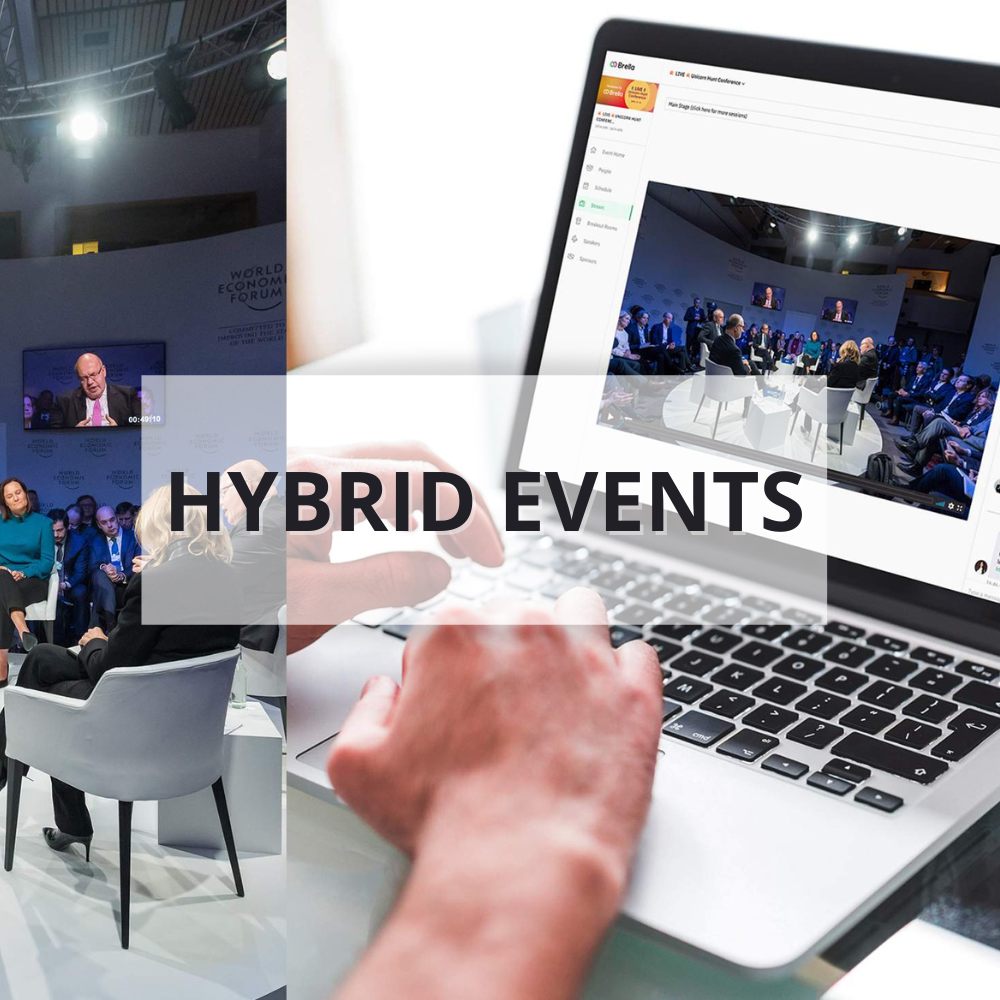The COVID-19 pandemic has drastically changed the way events are organized and executed. As lockdowns and social distancing measures forced many events to be canceled or postponed, event planners were forced to pivot to virtual events to ensure their attendees could still participate. The virtual event landscape has evolved rapidly, with many companies and organizations discovering the benefits of this format.
Now, as the world starts to open up, we are entering a new era of event planning. The future of events will be hybrid, with both in-person and virtual elements, offering the best of both worlds. In this blog post, we'll explore the future of hybrid events, including the benefits and challenges of this format, and provide tips for event planners looking to organize a successful hybrid event.
Benefits of Hybrid Events
Hybrid events offer a range of benefits to both event planners and attendees. One of the main advantages of hybrid events is their flexibility. With both in-person and virtual elements, attendees can choose how they want to participate in the event. Those who are unable to attend in person can still participate virtually, while those who prefer to attend in person can do so.
Hybrid events also offer cost savings. In-person events can be expensive to organize, with costs such as venue rental, travel, and catering. By incorporating virtual elements into the event, event planners can reduce these costs and make the event more accessible to a wider audience.
Another benefit of hybrid events is their ability to increase attendance. By offering a virtual component, event planners can reach a global audience, which can significantly increase the number of attendees. This also allows attendees to network with people they may not have had the opportunity to meet otherwise.
Challenges of Hybrid Events
While hybrid events offer many benefits, they also come with their own set of challenges. One of the main challenges of hybrid events is ensuring that both in-person and virtual attendees have an equal experience. It can be challenging to create a cohesive experience for both groups, especially when it comes to networking and engagement.
Another challenge of hybrid events is technology. Event planners need to ensure that the technology they use is reliable and can support both in-person and virtual attendees. This includes choosing the right platform, ensuring a strong internet connection, and providing technical support throughout the event.
Tips for Planning a Successful Hybrid Event
To plan a successful hybrid event, event planners need to consider both the in-person and virtual components of the event. Here are some tips for planning a successful hybrid event:
Choose the right venue: When choosing a venue, consider the needs of both in-person and virtual attendees. Choose a venue that can accommodate both groups, with features such as high-speed internet and AV equipment.
Use the right technology: Choose a platform that can support both in-person and virtual attendees. Ensure that the platform is reliable and provides features such as live streaming, chat functionality, and virtual breakout rooms.
Create engaging content: Create content that is engaging for both in-person and virtual attendees. Consider incorporating interactive elements such as polls, Q&A sessions, and live chats.
Provide networking opportunities: Ensure that both in-person and virtual attendees have the opportunity to network and connect with each other. This could include virtual networking sessions, in-person meetups, and online forums.
Have a backup plan: Ensure that you have a backup plan in case of technical difficulties or unforeseen circumstances. This could include having a backup internet connection, providing technical support, and having a contingency plan for virtual attendees.
The future of events is hybrid, with both in-person and virtual elements. Hybrid events offer a range of benefits, including flexibility, cost savings, and increased attendance. However, they also come with their own set of challenges, including ensuring a cohesive experience for both in-person and virtual attendees and ensuring reliable technology.


